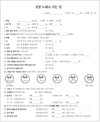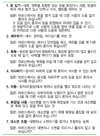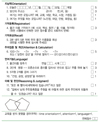Abstract
There are two ways to assess aging: to evaluate the function and to estimate the biological age. The biological age is estimated objectively by measuring the level of biological aging, taking apart with disease. It is measured with some biomarkers, which reflect the change of organ function and body with aging. It is, however, difficult to use in clinical practice. The evaluation of function is more practical and easier to clinicians. The parameters used include Activities of Daily Living (ADL), Instrumental Activities of Daily Living (IADL), and Mini-Mental Status Examination (MMSE) to evaluate the level of cognitive function. Balance test, standing up from chair, and walking pace can be checked to evaluate the physical function. Each method has its own limitations in evaluating the degree of aging precisely.
Figures and Tables
References
1. Korean Geriatrics Society. Textbook of Geriatric Medicine. 2005. 2nd ed. Seoul: Medical Publishing;28–30.
3. Cho BL. Assessment of markers of aging. J Korean Acad Fam Med. 2005. 26:S68–S74.
5. Miller RA. When will the biology of aging become useful? Future landmarks in biomedical gerontology. J Am Geriatr Soc. 1997. 45:1258–1267.

6. Nakamura E, Miyao K. Further evaluation of the basic nature of the human biological aging process based on a factor analysis of age-related physiological variables. J Gerontol A Biol Sci Med Sci. 2003. 58:196–204.

7. Hochschild R. Can an index of aging be constructed for evaluating treatments to retard aging rates. A 2,462-person study. J Gerontol. 1990. 45:B187–B214.

8. Kang YK. Clinical Assessment of Aging. J Korean Acad Fam Med. 2006. 27:S602–S604.
9. Ueno LM, Yamashita Y, Moritani T, Nakamura E. Biomarkers of aging in women and the rate of longitudinal changes. J Physiol Anthropol Appl Human Sci. 2003. 22:37–46.

10. Won CW, Yang KY, Rho YG, Kim SY, Lee EJ, Yoon JL, Cho KH, Shin HC, Cho BR, Oh JR, Yoon DK, Lee HS, Lee YS. The Development of Korean Activities of Daily Living(K-ADL) and Korean Instrumental Activities of Daily Living(K-IADL) Scale. J Korean Geriatr Soc. 2002. 6:107–120.
11. Kwon YC, Park JH. A Validation Study of the Korean-Version of Mini-Mental State Examination(MMSE-K). J Korean Neuropsychiatr Assoc. 1989. 28:125–135.
12. Cho BL. Physical Performance Measures in the Elderly. J Korean Acad Fam Med. 2003. 24:689–695.
13. Guralnik JM, Simonsick EM, Ferrucci L, Glynn RJ, Berkman LF, Blazer DG, Scherr PA, Wallace RB. A short physical performance battery assessing lower extremity function: association with self-reported disability and prediction of mortality and nursing home admission. J Gerontol. 1994. 49:M85–M94.

14. Flaherty JH, Morley JE, Murphy D, Wasserman M. The development of outpatient clinical Glidepaths TM. J Am Geriatr Soc. 2002. 50:1886–1901.




 PDF
PDF ePub
ePub Citation
Citation Print
Print







 XML Download
XML Download